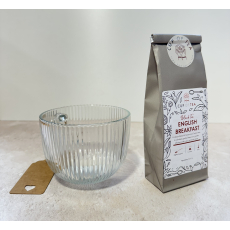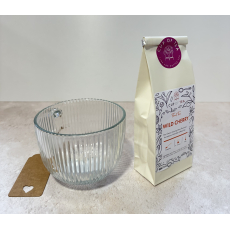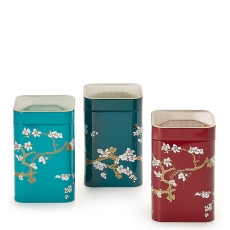HOW TO MAKE LOOSE TEA - THE BEGINNERS GUIDE
How to make loose tea. It's simple - take it from us.
You want to buy tea online, but you're not sure how to make loose tea. Maybe you're feeling daunted by the unknown. Or perhaps you're simply lacking time. Well, the good news is that we can tell you precisely how to make loose tea. And the even better news? It's easy. In fact, it's no more difficult to make loose tea than it is to use a run-of-the mill teabag.
Before divulging our tips on how to make loose tea, we think it's important to explain a few basics of tea production. Broadly speaking, tea is produced using one of two methods: the CTC method, or the orthodox method. ‘CTC', which stands for ‘crush, tear and curl', involves the automated picking and processing of tea leaves, which are chopped down into small pieces by machines. When tea is produced using the orthodox method, the leaves are picked and processed by hand.
The question of how to make loose tea, then, is preceded by the question of which type of tea to use. And the answer is: orthodox-produced tea. Why? Because only orthodox production methods are capable of yielding high-quality loose tea.
If you are thinking about how to make loose tea, the chances are you will already appreciate its benefits. In case you don't, here are a few of them:
- Quality: when you make a cup of loose tea, the quality is bound to be far superior to that found in mass-produced teabags. In fact, many of the best teas are only available in loose leaf form
- Flavour: loose tea retains natural flavours that are often lost when tea leaves are ground to dust. Which they usually are, before being put into mass-produced teabags
- Choice: there are more than 3,000 types of tea in the world. Most of these won't be found in teabags on the shelves of your local supermarket - rather, they will be found in the form of loose tea
That isn't to say that you should shun teabags per se. Some teabags, such as our Japan Classic and our Darjeeling, contain ‘fannings' - tea particles that are larger than dust, and produced using orthodox methods. It stands to reason that, being a higher grade of tea, fannings produce a brew of much higher quality.
Now to our step-by-step guide to how to make loose tea.
- Boil some fresh water. Our top tip: never use re-boiled water, as this can affect the flavour of the tea
- Take some loose tea from your tea caddy, and measure it into a tea strainer, tea filter or tea infuser using a tea measuring spoon
- Place your strainer, filter or infuser into a teapot or teacup, and pour the water over the leaves. Bear in mind that, when you pour water into a teapot, it will lose around 10°C of heat almost immediately. For black tea, pour the water over straight away. For green tea, you may prefer to let the water cool very slightly first. This is a matter of taste, and once you have worked out your preference, a tea thermometer provides the perfect way to maintain consistency
- Set a tea timer for the necessary amount of time, and allow the tea to brew. As a rule of thumb, you should brew green tea for two to three minutes, and black tea for three
- Remove the tea leaves, to halt the brewing process. Never leave the tea in the water for longer than is needed, as this will cause the tea to over-brew
- If you have some tea left in the pot, you can keep this warm this over a tealight - hence how these candles earned their name!
So there you have it: our advice on how to make loose tea. And we're confident that, once you've made one cup of loose tea, there will be no turning back.
- 22nd October 2010
Recently viewed...












 EARN POINTS WITH OUR LOYALTY SCHEME
EARN POINTS WITH OUR LOYALTY SCHEME





